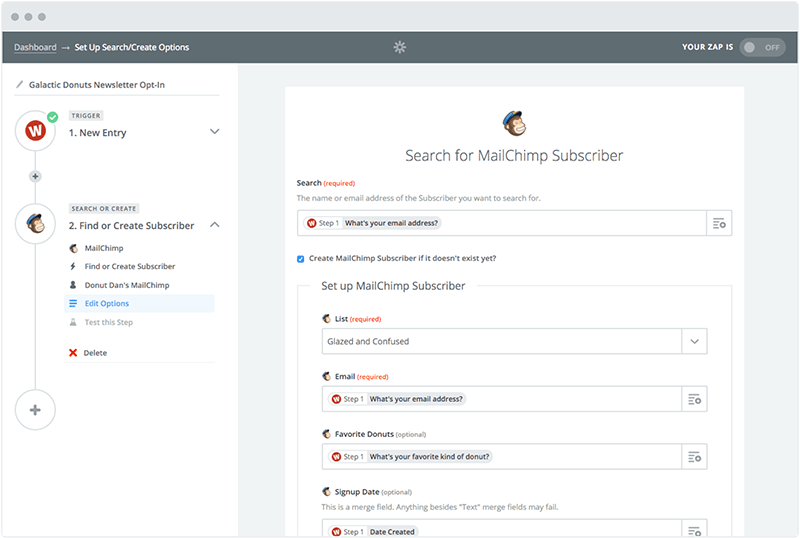Share
“Dealing with everything means losing relevance”. Success in software development is in the specialisation. My leitmotif when facing the development of a product is “Focus on what you do best, and join the best in their field.” Experience tells me that, otherwise, it is very difficult to further progress at a good pace. The idea is to focus and specialise in what you really are good at (in our case, the e-learning product), and benefit from the good of other products and services, developed by other companies, and integrating with them. These services complement our e-learning solution and are able to evolve better and faster as they are focused on their specialty.
Let’s take an example
This has been one of the key factors behind the success of Slack, founded in 2013, which has managed to get its messaging application to be the most popular in the corporate sector in just four years. Slack has not invented instant messaging, but it does give it a twist; first, taking great care of the user experience and, secondly, orienting it to the corporate sector (for conversations within the family WhatsApp already exist).
How did they get it? Integrating with all the tools in the market related to business productivity, which benefited both Slack and those products. But they have not been the only ones, not even the first. All Microsoft tools integrate seamlessly with each other (for example, when we embed an Excel spreadsheet in a Word document), and with third-party tools. What does MS Excel not integrate with? An example of this: Dropbox, SalesForce, Google Suite, MailChimp, Trello, WordPress, and a long etcetera.
A universe of interconnected acronyms
In the technological world and especially in software development, there is a mare magnum of acronyms, which hide behind protocols and standards intended to facilitate that very different projects integrate with each other, in a safe way.
- SDKs (Software Development Kit) provide code to be included in your project and be able to embed the service on your platform. Through this route, we were able to display information about the use of the platform by users with Google Analytics, to show the Zendesk online support window on the web, to pay securely through PayPal…
- Within the world of e-learning emerges the LTI (Learning Tools Interoperability) specification, which allows us to access an external service or resource without the user having to identify again on the platform that is serving us. This is how we can quickly integrate OpenSesame’s e-learning content marketplace or Kaltura’s on-demand video platform.
But what has really changed everything forever has been the popularisation of APIs (Application Programming Interface). Through an API, any application can dialogue with other applications, exchange information and request that they execute certain actions. For example, thanks to the Anders Pink API, we have been able to include their briefings in learningCloud, or we automatically exchange user information and results in courses with SuccessFactors, Meta4 PeopleNet, and so on.
Using the API of an external service, until now, required some important know-how. This task usually fell on software developers. That is changing. For some time, specialised platforms are appearing on the market to facilitate interoperability between different services and providers. Through simple forms and a careful user experience, they get a person with no programming knowledge to configure advanced workflows involving several services, for example:
- When a new email is sent to the account “sales@my-company” with the label “urgent” in the title, a message will be sent to a Slack channel.
- When the purchase of a certain product ends in my Shopify-mounted e-commerce, a satisfaction survey will be sent through SurveyMonkey.
In the world of e-learning we can also find good examples:
- When you add a new row in an Excel spreadsheet stored in OneDrive with an identifier of a user and a course, the user will be enrolled in the mentioned course.
- When you add a new user with a “sales” profile in SalesForce, the user will be enrolled in three learningCloud courses related to sales, and a task will be added on a Trello board with the title “Complete online training”.
- When a user completes a course, a new row will be instructed to a spreadsheet stored in Google Drive with the score obtained, and then an email will be sent to their team leader.

Today, the most recognised is Zapier, with hundreds of applications available to interconnect, but it is not the only one: Apiant, Automate.io, Integromat or Tray.io are some we can mention among all that are appearing. These platforms have realised that to avoid companies that have to do a tailor-made development to create these (undoubtedly costly) workflows, reduce the time to market and the subsequent cost of maintenance, is beneficial to all, and that, consequently, there is business.
Share


One Response
Nice Blog, Thank you for sharing a valuable topic. Thanks & Regards,
From Call Center Software.